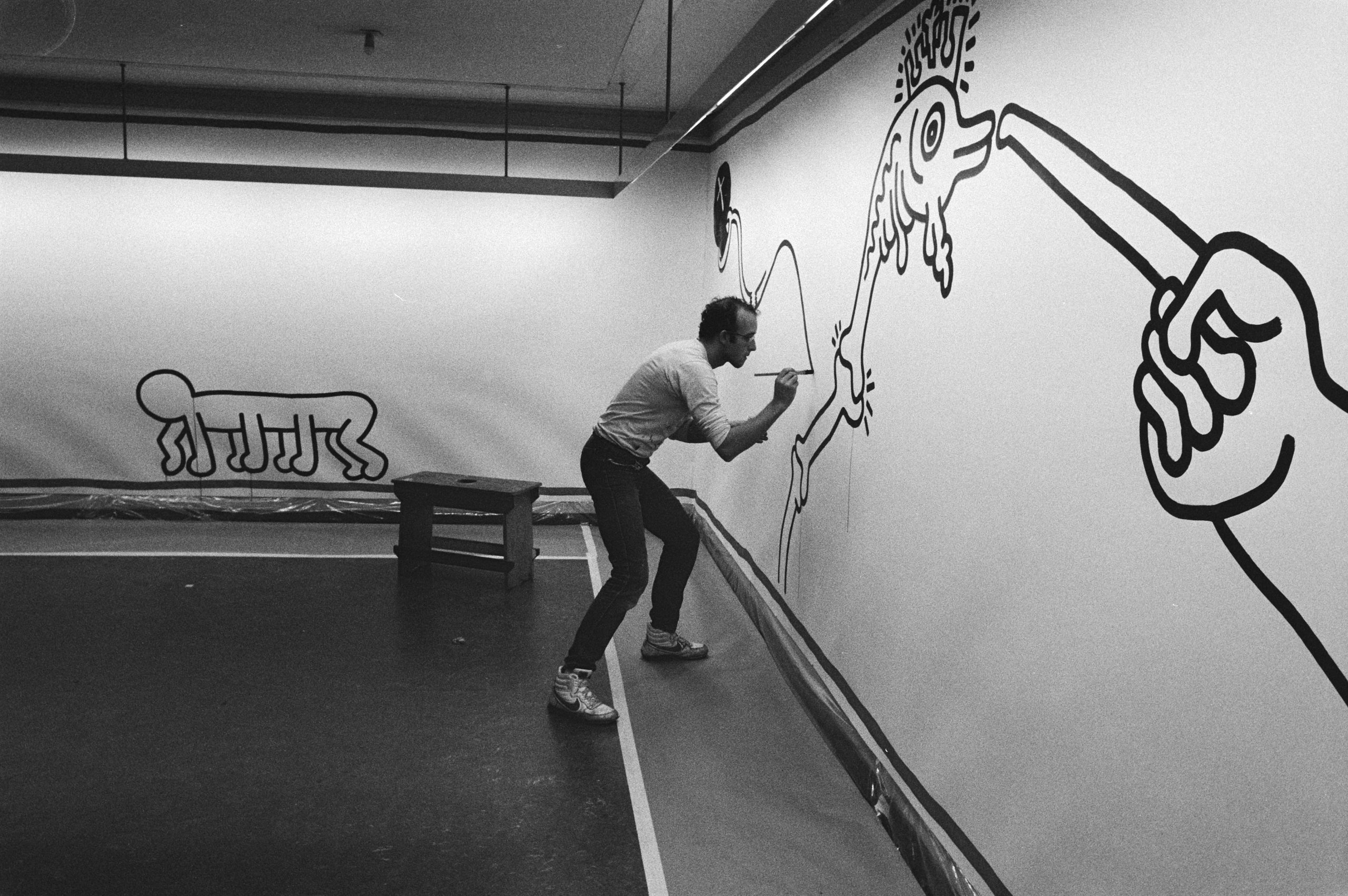
By 1986, Keith Haring was at the peak of his powers. But when tasked with creating an exhibition for Amsterdam’s Stedelijk Museum, Haring refused to remount old works, or even to lean on the celebrated visual motifs—the barking dogs, the glowing babies—with which his name had become synonymous. The New York artist wanted to create something completely new.
One of the results was Amsterdam Notes, a 125-foot black ink drawing that stands as one of the largest pieces Haring made for a museum. Nearly three decades on, Stedelijk is restaging the giant paperwork in its IMC Gallery, its so-called hall of honor, alongside two other works from the museum’s collection from May 26.
Keith Haring, Amsterdam Notes (1986). Photo: Collection Stedelijk Museum Amsterdam.
Keith Haring, Amsterdam Notes (1986). Photo: Collection Stedelijk Museum Amsterdam.
Keith Haring, Amsterdam Notes (1986). Photo: Collection Stedelijk Museum Amsterdam.
“For art lovers, Amsterdam Notes is a contemporary Bayeux tapestry, and a holy grail for Haring fans. Since works on paper are fragile, they cannot be exhibited for long,” the museum’s director Rein Wolfs said. “Moments such as this are unique, and happen rarely. But, this summer, the door to the Stedelijk’s treasury is ajar.”
Amsterdam Notes captures many of the socio-political themes around which Haring’s art so-often centered. There’s the oppressive power of religion in crucifixes set alight, and sexual liberation in gleefully exposed vulva and a pair of men clutching each other’s phalluses.
But unlike many of Haring’s smaller works, Amsterdam Notes is not easily reduced to simple messages or stories and seems concerned with the act of looking itself, as offered in many-eyed heads, an imploding television, and a ghoulish mirror reflection. It’s a spatial composition, one that is also charmingly bizarre, filled with monsters, walking brains, errant limbs, and a fish, which Stedelijk speculates is a playful nod to Haring’s name, which means herring in Dutch.
Mural (1986) by Keith Haring on the Food Center Amsterdam. Photo: Hanna Hachula, © Keith Haring Foundation.
As part of the 1986 Amsterdam exhibition, Haring also spray painted a 40-by-66-foot velum for the show’s floor as well as a giant sea monster on the museum’s former art storage depot, which is the largest Haring made in Europe. It was revealed and restored in 2018 after being concealed behind aluminum plates for nearly 30 years.
“Amsterdam Notes” is on view at the Stedelijk Museum, Museumplein 10, 1071 DJ Amsterdam, Netherlands, from May 26.
More Trending Stories:
Considering a Job in the Art World? Here’s How Much Art Professionals Actually Make for a Living
55 Hindu Relics Stolen From Temples Across India Have Been Located in the Home of an Art Collector